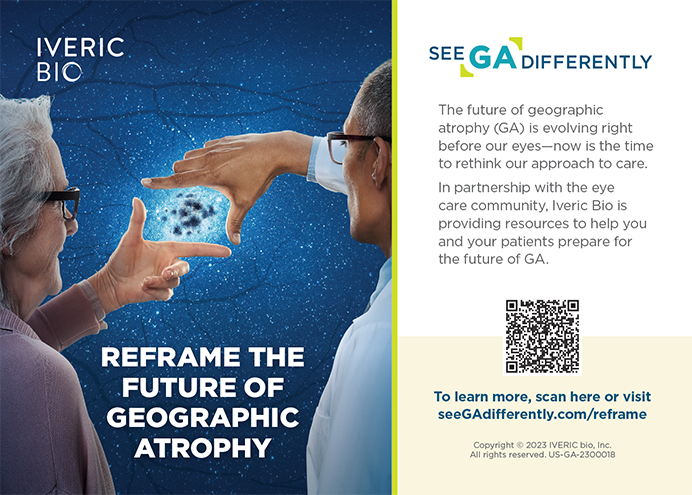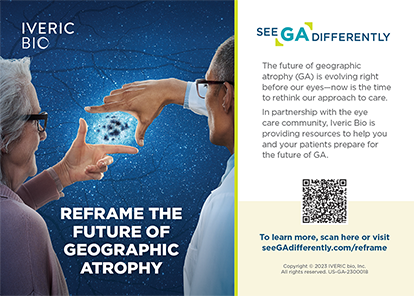
Cataract surgery has rapidly become one of the most widely performed surgeries in the world. Although implants have improved significantly with continued research, inaccuracies in IOL calculation and preexisting corneal astigmatism often result in some degree of residual refractive error.1 This pseudophakic ametropia can then be corrected by either keratorefractive procedures, including LASIK and PRK, or lens-based procedures, including IOL exchange and piggyback IOLs.
AT A GLANCE
Keratorefractive surgeries usually provide better predictability and accuracy than either IOL exchange or piggyback lens techniques, particularly for astigmatic outcomes, and avoid much of the risk associated with the performance of subsequent intraocular surgeries.
Both PRK and LASIK have been demonstrated to be safe and effective for the correction of residual refractive error after cataract surgery, but LASIK may induce more severe and persistent damage to corneal sensation, corneal barrier function, and tear film stability than PRK.
In cases of refractive surgery after multifocal IOLs, conventional laser vision correction is recommended to minimize higher-order aberrations.
Typically, keratorefractive surgeries provide better predictability and accuracy than either IOL exchange or piggyback lens techniques, particularly for astigmatic outcomes, and laser vision correction (LVC) avoids much of the risk associated with the performance of subsequent intraocular surgeries.2 The question remains, however, whether PRK or LASIK provides the most highly optimized correction of residual refractive error after cataract surgery.
A LOOK AT THE DATA
Initial studies of PRK and LASIK for treating pseudophakic refractive error indicated that both procedures could be used safely and with a high level of efficacy. A 1999 study of 30 eyes with postsurgical ametropia found that, 12 months after PRK, 93% of participants were within ±0.50 D of the target refraction.3 In 2001, similar results were reported for the efficacy of LASIK using a microkeratome and the EC-5000 laser (Nidek), with 82% of studied eyes within ±1.00 D of emmetropia.4 LASIK has also been shown to be effective after the implantation of diffractive multifocal IOLs. Six months after performing LASIK using an IntraLase FS-60 (Abbott Medical Optics [AMO]) and Visx Star (AMO) on patients who had received diffractive AcrySof Restor IOLs (Alcon), 100% were within ±1.00 D of the target refraction.5
A later study, in which LASIK was performed using the Intralase FS-60 and Visx Star on patients previously implanted with diffractive IOLs, found that 96% were within ±0.50 D of the target refraction and that less than 1.00 D of astigmatism remained in 98% of studied eyes.6 Additionally, a 2005 study concluded that refractive outcomes in pseudophakic eyes can often rival those of treatment-naïve eyes based upon criteria of a distance UCVA of 20/40 or better, a refraction within 0.50 or 1.00 D of the target, and a loss of 1 or fewer lines from distance BCVA.7 The efficacy of PRK for treating residual refractive error after multifocal lens implantation has also been demonstrated; one 2004 study reported 100% of eyes implanted with Array IOLs (AMO) to be within ±1.00 D of emmetropia after PRK had been performed.8
Although both PRK and LASIK have been demonstrated to be safe and effective for the correction of residual refractive error after cataract surgery, in many cases, LASIK induces more severe and persistent damage to corneal sensation, corneal barrier function, and tear film stability than PRK.9 Because postcataract patients are often older than LASIK patients by at least 2 decades, ocular surface disease (OSD) occurs much more frequently in pseudophakic than in treatment-naïve patient populations.10 OSD affects both the quality of the preoperative data prior to LVC and the quality of vision after LVC. An appropriate evaluation of the ocular surface should therefore be performed, with subsequent treatment, including planning for interventions to manage worsening of OSD after LVC. Often, the health of the ocular surface influences the decision to perform LASIK versus PRK after cataract surgery.
WAVEFRONT TECHNOLOGY
Wavefront-guided LASIK with iris registration can be used to compensate for eye rotation, cyclotorsion, and pupillary centroid shift to improve outcomes. In treatment-naïve eyes, wavefront-guided LASIK performed with a Visx WaveScan Wavefront System (AMO) and Visx Star S4 laser was able to correct for cyclotorsion and reduce axial misalignment, resulting in better outcomes.11 This finding was confirmed in eyes receiving Tecnis diffractive multifocal IOLs (AMO) by a 2008 study, which found the wavefront-guided customized ablation using a Visx Star S4 IR excimer laser was able to correct astigmatism more precisely than standard ablation.12 The same study, however, found that the use of iris registration reduced distance and near BSCVA as well as near UCVA in eyes implanted with refractive ReZoom IOLs (AMO), causing the authors to conclude that current wavefront measurement instruments are not suitable for use with refractive IOLs.12 Although wavefront-guided procedures can also be used during PRK, a 2015 prospective randomized clinical trial found that both wavefront-guided and aspheric PRK increased higher-order aberrations (HOAs) overall but that aspheric PRK generated significantly fewer HOAs than wavefront-guided ablation.13
Some studies have reported that wavefront-guided customized ablation can improve refractive outcomes in patients who receive diffractive IOLs, but a number of factors, including Hartmann-Shack spot image degradation, have raised concerns about whether or not current wavefront measurement techniques are sufficiently accurate for refractive cataract surgery.14 In cases of refractive surgery after multifocal IOLs, conventional LVC is recommended to minimize HOAs.
CONCLUSION
Keratorefractive procedures such as LASIK and PRK have been repeatedly demonstrated to be safe and effective for the elimination of postsurgical refractive error in eyes implanted with both monofocal and multifocal IOLs. OSD and HOAs are important factors when deciding between these highly effective modalities for treating a specific patient.
1. Abdelghany AA, Alio JL. Surgical options for correction of refractive error following cataract surgery. Eye Vis (Lond). 2014;1:2.2
2. Fernández-Buenaga R, Alió JL, Pérez Ardoy AL, et al. Resolving refractive error after cataract surgery: IOL exchange, piggyback lens, or LASIK. J Refract Surg. 2013;29(11):796.
3. Artola A, Ayala M, Claramonte P, et al. Photorefractive keratectomy for residual myopia after cataract surgery.
J Cataract Refract Surg. 1999;25:1456-1460.
4. Ayala M, Perez-Santonja J, Artola A, et al. Laser in situ keratomileusis to correct residual myopia after cataract surgery. J Refract Surg. 2001;17:12-16.
5. Alfonso J, Fernandez-Vega L, Montes-Mico R, Valcarcel B. Femtosecond laser for residual refractive error correction after refractive lens exchange with multifocal intraocular lens implantation. Am J Opthalmol. 2008;146:244-250.
6. Muftuoglu O, Prasher P, Chu C, et al. Laser in situ keratomileusis for residual refractive errors after apodized diffractive multifocal intraocular lens implantation. J Cataract Refract Surg. 2009;35:1063-1071.
7. Kim P, Briganti EM, Sutton GL, et al. Laser in situ keratomileusis for refractive error after cataract surgery. J Cataract Refract Surg. 2005;31:979-986.
8. Leccisotti A. Secondary procedures after presbyopic lens exchange. J Cataract Refract Surg. 2004;30(7):1461-1465.
9. Nejima R, Miyata K, Tanabe T, et al. Corneal barrier function, tear fim stability, and corneal sensation after photorefractive keratectomy and laser in situ keratomileusis. Am J Opthalmol. 2005;139:64-71.
10. Patel S, Alió J, Walewska A, et al. Patient age, refractive index of the corneal stroma, and outcomes of uneventful laser in situ keratomileusis. J Cataract Refract Surg. 2013;39:386-392.
11. Kim H, Joo C. Ocular cyclotorsion according to body position and flap creation before laser in situ keratomileusis.
J Cataract Refract Surg. 2008;34:557-561.
12. Jendritza BB, Knorz MC, Morton S. Wavefront-guided excimer laser vision correction after multifocal IOL implantation. J Refract Surg. 2008;24:274-279.
13. Zarei-Ghanavati S, Gharaee H, Hamilton D, et al. Ashperic versus wavefront-guided photorefractive keratectomy: contralateral eye study. J Cataract Refract Surg. 2015;41:1441-1447.
14. Charman W, Montés-Micó R, Radhakrishnan H. Can we measure wave aberration in patients with diffractive IOLs? J Cataract Refract Surg. 2007;33:1997.
Cathleen M. McCabe, MD
• cataract and refractive specialist practicing at The Eye Associates in Bradenton and Sarasota, Florida
• (941) 792-2020; cmccabe13@hotmail.com; Twitter @CathyEye
• financial disclosure: speaker for Abbott Medical Optics; consultant to Allergan; speaker for and consultant to Alcon and Bausch + Lomb


